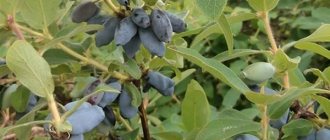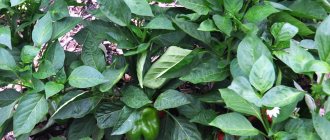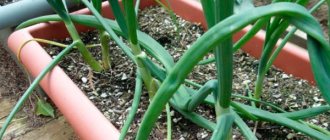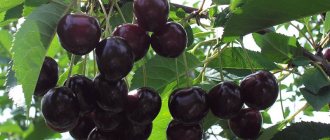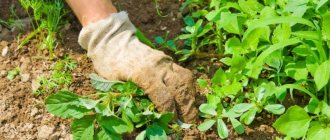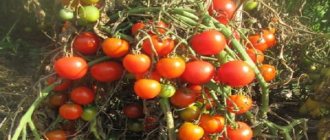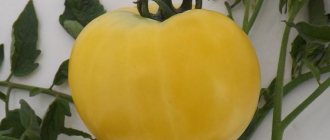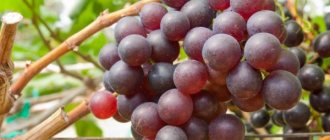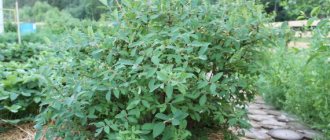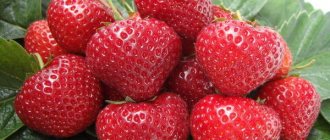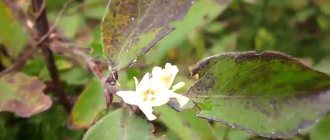Honeysuckle "Violet": characteristics and care
Honeysuckle can be found extremely rarely in Russian gardens. Nevertheless, breeders are constantly developing new varieties of berry crops. Not so long ago, breeders from the Pavlovsk Experimental Station VIR managed to develop a productive variety of honeysuckle, “Violet”.
State selection tests began in 1992, and in 1995 honeysuckle was allowed for cultivation. Let's consider its main characteristics.
History of selection
The Violet variety was obtained by workers of the Pavlovsk experimental station VIR (St. Petersburg) through open pollination of the Roxana variety. Its further tests and studies were carried out at the Krasnokutsk experimental station (Ukraine). The authors of the variety are Plekhanova M.N., Kondrikova A.V. and Kikbalo V.A. After state tests in 1995, the Violet variety first received regionalization in the North-Western region, and after a while - throughout the country. In Ukraine, the recommended areas for this honeysuckle are the northern regions.
Description of the variety "Violet"
At first, honeysuckle was zoned for cultivation in the North-Western region, and a few years later throughout Russia. The plant is medium-sized, the height does not exceed 1.5 meters. The bushes are slightly spreading, the crown is rounded, the branches are dense. The shoots grow straight and are colored brown-green. The leaves are large, the shape resembles an elongated oval, the color is rich green. The flowers are collected in inflorescences, their size is medium, and painted in a soft green color.
The fruits are large, the weight of one reaches 1.5 grams, length 2.5-2.8 centimeters, diameter up to 1 centimeter. The shape of the berries is unusual, reminiscent of a small jug. The surface of the fruit is lumpy, slightly curved. The skin is strong, smooth, covered with a waxy coating, and colored dark blue with a purple tint. The pulp is hard, fibers are visible over the entire surface. The taste of the berries is sweet and sour, the aroma is light and unobtrusive.
Honeysuckle is used to prepare various desserts. The collected berries can be transported over long distances; the shelf life does not exceed 4-5 days if they are picked unripe. Depending on the growing region, the berries ripen differently: in the southern regions - at the end of May, early June, in the middle zone and northern regions at the end of June. The berries fall off weakly, even if they are overripe. Planted bushes begin to bear fruit in the third or fourth year. The yield is low; up to two kilograms of berries can be collected from one bush.
Characteristic
Violet honeysuckle has high winter hardiness and an average yield.
Frost resistance and drought resistance
The variety has high winter hardiness and winters well in the central zone of the Russian Federation. Return frosts in spring do not damage it.
Fruiting, productivity
The variety is early-bearing and begins to bear fruit 3-4 years after the seedling is planted. The yield of the bush is no more than 1.8 kg. The ripening time of berries depends on the growing area. In Ukraine, berries can be picked from the end of May, and in the Moscow region - from the end of June.
Features of the plant
The honeysuckle variety “Violet” tolerates frost well, has high immunity to disease, and is rarely attacked by various pests. The plant is self-sterile, therefore, in order to get a harvest, pollinating varieties need to be planted nearby: “Viola”, “Morena”, “Amphora”, “Blue Spindle”, “Slastena”.
A berry crop can bear fruit several times per season, but extremely rarely. Honeysuckle grows well in heavy and light loamy soils. Bushes are planted not only to collect delicious berries, but also as an element of farmstead decor.
Advantages and disadvantages
Honeysuckle Violet is woven from advantages; there are no significant shortcomings in the description of the variety. Its main advantages:
- frost resistance;
- not fussy to care for;
- rare diseases;
- a small list of pests;
- transported easily and without loss;
- bears fruit well;
- the berries are large, with excellent taste characteristics;
- does not crumble when ripe.
Honeysuckle, in addition to all the listed advantages, also has valuable medicinal qualities, in particular, ascorbic acid in its composition will help to significantly improve immunity.
Tips for growing and caring for honeysuckle
- It is recommended to plant honeysuckle in the fall, before it gets significantly colder. It is not worth planting plants in the spring, since sap flow begins early and they will take a very long time to take root.
- The “Violet” variety loves to be fertilized with organic fertilizers. This can be humus, liquid fertilizer from mullein, or bird droppings.
- A few days before planting, the honeysuckle bush should be doused with boiling water. This will kill various parasites and bacteria that may live on the plant.
- Bushes should be planted at a distance of one and a half meters from each other. The hole is dug in accordance with the size of the root system. Humus, sand, and rotted sawdust are added to the removed soil. A seedling is placed in the hole, the roots are straightened, and covered with the resulting soil mixture. The soil under the plant is compacted and watered with warm water (2 buckets). The soil around the bush needs to be mulched to reduce moisture evaporation and also retain heat.
- In the spring, after the snow has melted, nitrogen-containing fertilizer should be applied to the plants. It is prepared very simply; 20 grams of saltpeter are dissolved in a ten-liter bucket of warm water and watered 5 liters per bush.
- In the spring, the mulch must be completely removed or replaced with a new one.
- Plants need to be watered once a week until they begin to grow.
- Honeysuckle needs to be fed in the spring during fruit set and in the fall before frost. A bush will require one bucket of rotted manure or forty grams of superphosphate.
- Plants can be pruned in late autumn or early spring, when sap flow has not yet begun. Remove shoots that grow inward, dry branches, old branches.
- Honeysuckle is extremely rarely attacked by pests, but if caterpillars, aphids, and leaf rollers suddenly settle on the bushes, then they can be destroyed using the preparations “Aktofit” and “Bikol”. It is not recommended to use the preparations during flowering, formation and ripening of fruits.
Reviews from gardeners
Tatyana Ivanovna, 35 years old, Bryansk region.
I didn’t know about honeysuckle at all before. The first bushes of the plant were planted in 2007. I selected the varieties “Slastena” and “Violet”. They began to bear fruit in the third year after planting. I liked the variety “Violet” more than “Slastena”. It has higher resistance to diseases and frost. The fruits are sweet and sour, large, I really like them. Over the eleven years of cultivation, the plant rarely got sick. Caterpillars and aphids appeared several times. I fought pests with the drug “Fitoverm”.
Anatoly Evgenievich, 62 years old, Oryol region.
I planted honeysuckle variety “Violet” in the fall of 2012. Started bearing fruit in 2021. In the first year, there were about 20 berries; last year, 2021, I collected half a kilogram of fruit. Caring for the plant is simple. I fertilize in spring and autumn. I don't water it often, about twice a month. The berries grow large and tasty. We'll see how the plant behaves in the future, but so far I like everything about the variety.
Honeysuckle variety Violet - what it looks like, what family it belongs to
Honeysuckle Violet is a crop with shoots of medium height. After spring flowering, edible fruits are formed. The crop belongs to the Honeysuckle family (lat. Lonícera).
Description
Honeysuckle shoots reach a height of 1.5 m. The leaf blades are green and oblong. The flowers are medium in size, painted in a soft green palette.
The fruits are oblong, tuberous. Their weight is 1.2-1.5 grams, length is 2.8-3 centimeters. The skin is colored blue-violet. The surface of the fruit is covered with a waxy coating. The pulp is fibrous, tastes sweet, with a slight sourness.
Additional Information. In folk medicine, the entire above-ground part of the crop is used for treatment.
Violet shoots reach a height of 1.5 meters
History of appearance
This variety was bred by breeders of the Pavlovsk Experimental Station. They pollinated the seed material of the Roksolana variety. Then it was tested by specialists from the Krasnout experimental station, located in Ukraine.
Habitat
In 1995, the variety received approval and is recommended for cultivation in all regions of Russia. In Ukraine, honeysuckle variety Violet will develop best in the northern regions.
For reference! Japanese honeysuckle is used for landscaping. She has large inflorescences of white and yellow color. Habitat: Japan, China, Korea.
Type of violets Japanese honeysuckle
The famous breeder Elena Lebetskaya bred Saintpaulia with similar flowers. By analogy, it was given the name: violet LE Japanese honeysuckle (japan zhimolost).
Violet LE Japanese honeysuckle
Features of honeysuckle care
Caring for the crop consists of timely watering, mulching, periodic fertilizing, and autumn pruning.
Watering
A small tree is watered as needed. The top layer of soil should have time to dry out. If there is a large amount of precipitation during the summer, additional watering is not required.
Note! To retain moisture, the soil is mulched with sawdust, peat, and mown grass.
Spraying
The plant can be affected by disease and pests. For prevention in the spring, it is sprayed with special preparations - most often Bordeaux mixture is used.
Humidity
The thickened crown is poorly ventilated, and droplets of moisture remain in it for a long time. High humidity can contribute to the appearance of fungal diseases. Therefore, the crown needs to be thinned out, and watering should be done at the root.
Priming
Honeysuckle called Violet develops best on light, fertile soils with a neutral reaction. In heavy, clayey soil, moisture will stagnate.
For reference! If the soil is acidic, add lime or wood ash.
Feeding
They begin to fertilize the soil in the 3rd year after planting. The frequency of application is as follows:
- for the development of green mass in early spring, nitrogen-containing substances are used;
- in May, bird droppings or manure are added;
- in September the bushes are fed with potassium and phosphorus.
Important! Nutrients are added to pre-moistened soil.
Trimming
For sanitary purposes, dry, broken, diseased branches are cut off in the fall. In addition, shoots growing inside are removed. They cannot be shortened, otherwise the gardener will not get a harvest this year.
Anti-aging pruning is carried out periodically: 5-6 shoots are left on an adult bush, the rest are cut off at the root.
Sanitary pruning is carried out in autumn
Honeysuckle fruit
Tasters rated the taste of the aromatic berries of the Violet variety at 4.7 points out of 5 possible.
The shape of the fruit resembles a jug. Their surface is slightly bumpy, the skin is thin but dense. The color of the berries is blue-violet, the taste is sweet and sour, with a pleasant aroma.
What are the benefits of berries and how are they used?
The fruits contain a large amount of nutrients. They help increase immunity, strengthen the walls of blood vessels, lower blood pressure, and remove heavy metal salts.
The berries are consumed fresh; jams, compotes, and jelly are made from them. The fruits are added to salads, mousses and cocktails are prepared from them. In addition, the berries are dried and frozen.
Note! Honeysuckle has laxative properties, so it is not recommended to consume more than 100 grams of berries per day.
Harvesting
The ripening of honeysuckle fruits occurs unevenly. The berries below begin to sing earlier. Therefore, harvesting is done gradually. The procedure is performed in dry weather.
The fruits of honeysuckle violet have beneficial properties
Features of growing honeysuckle
Honeysuckle Violet begins to bear fruit early, so it needs to be planted in the ground in the fall. The site is selected carefully, since the crop can grow in one place for up to 25 years.
Planting bushes
Seedlings are purchased from a plant nursery or garden center. They should be 2 years old, 30-40 centimeters high. Healthy bushes have no dents or spots on the surface of the shoots, and the roots are alive when cut.
Honeysuckle prefers to grow in a well-lit place. In this case, the berries will be sweet and aromatic. The procedure for planting bushes is as follows:
- dig holes measuring 50x50x50 centimeters;
- fill them with a nutrient mixture;
- Plants are placed in the middle of the holes and the roots are straightened;
- cover with earth, lightly compact;
- water abundantly.
Important! When planting, the root collar of seedlings is buried no more than 3 centimeters.
Honeysuckle is planted in open ground in the fall.
Pollination
Honeysuckle called Violet is not a self-fertile variety. Therefore, pollinating plants need to be planted near it.
Reproduction methods
To propagate Violet honeysuckle, it is best to use the following methods:
- Dividing the bush . The most common and simplest method. It is produced when the bush has already grown and gives adventitious roots during hilling. The plant is dug up in the off-season and divided into several parts. Each part is then planted as a separate seedling. The survival rate of such planting material is very high.
- By layering . In this case, honeysuckle shoots are used, which grow at an angle to the ground. Such annual shoots are pressed to the soil in early spring, then the tops are pinched and dug in. By autumn, the cuttings form their own root system. They are separated and placed in a permanent place.
- By cuttings . In this case, young shoots should be used. The cuttings must be at least 20 cm long and have 2-3 buds. They are rooted by creating greenhouse conditions or using ordinary pots for indoor flowers.
Possible problems in growing
The crop has good immunity, but if there are errors in care, it can be affected by various diseases and pests.
Advantages and disadvantages of the variety
The positive qualities of the variety include the following characteristics:
- ease of care;
- frost resistance;
- early fruiting periods;
- good bush immunity;
- excellent taste of the fruit;
- weak crumbling.
Negative qualities include the need to plant pollinator varieties nearby.
Diseases
With heavy rainfall or frequent watering, honeysuckle can be affected by fungal diseases. At the same time, spots and a whitish coating appear on the shoots and leaves. Fungicides are used to combat pathogenic microorganisms.
Powdery mildew on honeysuckle
Pests
Honeysuckle can be attacked by: scale insects, aphids, spider mites. They suck cell sap from the foliage, weakening the bushes. Insecticides are used against harmful insects. To prevent their appearance, plants are sprayed with Aktara and Decis in the spring.
Note! Treatment with chemicals is carried out before the plants flower.
Other problems
Fruits on plants are formed in the 3rd year after planting. If after the specified time fruiting has not begun, this means that pollinating varieties were not planted next to the honeysuckle, or they are not suitable for pollinating the crop.
Violet is a variety of honeysuckle with tasty, edible fruits. The plant is easy to care for and is frost-resistant. With good care, a gardener can collect about 1.8 kilograms of blue-violet healthy berries from a bush.
Diseases and pests
Honeysuckle variety Violet is quite resistant to many diseases . However, if agricultural cultivation techniques are violated and unfavorable conditions, some diseases and pests may appear.
Natural pests include aphids, scale insects and mites . They can be detected by yellowing and falling leaves. Other harmful insects include leaf rollers, miners, Persian moths, sawflies and bedbugs . They chew holes in leaves to feed on them. Deformation processes also appear in the leaves - they curl. The appearance of fingerwings is possible: these insects damage the berries, which cause them to become wrinkled and begin to fall off. Chemicals such as Fitoverm, Lepidocid, Karbofos, and Bicol are used against them.
To prevent the appearance of the described insects in early spring, preventive treatment with Confidor, Decis or Aktara is used. During the ripening of berries, it is better not to use chemicals, but to use folk remedies - spraying with a tobacco-soap solution, infusion of garlic or onion
Heavy rains with lower air temperatures can provoke the appearance of fungal diseases. They appear in the form of various spots, plaque on leaves and shoots. A disease such as powdery mildew may appear, which manifests itself as a whitish coating on the leaves . To combat fungal diseases, copper-containing preparations such as “Hom” are used. In addition, you can use such safe drugs as Fitosporin and Baktofit.
For prevention, early spring treatments are carried out with Bordeaux mixture or copper sulfate. Cut branches, fallen leaves and fruits are disposed of, and the soil is dug up before winter
Viral diseases can be identified by the variegated color of the foliage. Unfortunately, there are no effective means of combating such diseases. The bush should be dug up and disposed of (burned).
Edible honeysuckle of the Violet variety begins to bear fruit in late May - June and produces a harvest of healthy fruits of excellent taste and universal use, while the presence of pollinators is required nearby. It can be planted for landscape gardening.
Honeysuckle “Violet” - how to grow a unique shrub and receive its gifts?
If you look at the dachas of our compatriots, they are for the most part very similar in the crops that are grown there. Everyone plants currants, gooseberries, fruit trees, and the same vegetable crops. But for some reason you don’t see honeysuckle so often. And, by the way, this is a quite useful berry, and the shrub itself can also perform a decorative function in the landscape. Perhaps summer residents simply do not know how to plant the crop and what its strengths are. We decided to correct the situation and introduce you to a very good variety - this is honeysuckle “Violet”.
Harvest and storage
Berries begin to be picked at the end of May. They appear on the side branches, inside the bushes and ripen unevenly - first from above, then from below. The fruits are picked as they ripen and stored in the refrigerator for a maximum of 2-3 days.
Honeysuckle Violet is suitable for fresh consumption, freezing, drying, making juices, compotes, wine, and jam.
Description of culture
The variety has a pleasant name, you will agree that it encourages you to get to know it. Let's do this. The variety was bred by breeders from St. Petersburg at the Pavlovsk experimental station. The predecessor was honeysuckle with good characteristics - “Roxana”. Further, honeysuckle was studied and refined by other breeders at an experimental station in the Kharkov region, so that the shrub could be introduced into cultivation. In 1995, all work and tests were completed, and “Violet” was allowed to be grown throughout our country and in Ukraine.
As we have already said, the variety performs two functions - fruiting and decorative. Honeysuckle produces very useful blue-violet berries; it looks beautiful on the site during fruiting and flowering. Agree, not many crops have such a shade of fruit, and at the same time a unique shape. The berry contains a rich composition, it can be eaten raw, made into marshmallows, jam, compotes, smoothies, dried and frozen. Therefore, you will only get benefits from growing it at your dacha.
Important! Not all honeysuckle is harmless and can be eaten. Those varieties that bear red and orange berries are not edible, they are only for decoration. But blue, purple fruits with a bluish coating are suitable for our diet.
Varietal characteristics of honeysuckle “Violet”:
- the bush grows up to 1.5 meters;
- has a rounded crown and the same shape of leaves that fit tightly to the branches;
- “Violet” flowers have a delicate pinkish tint;
- the fruits ripen in the third decade of May;
- the shape of the berry is elongated, there are tubercles and notches;
- the weight of one fruit is 1-1.5 grams, they are up to 3 cm in length;
- has a pleasant aroma, taste - both sweet and sour;
- the skin has a bluish coating, blue-violet hue, the flesh is dense;
- one bush brings up to 2.5 kg of berries per season. After planting for the first time, it is received for 2-3 years;
- the fruits have a good presentation, are stored for a long time, and can be transported;
- the variety does not freeze, is highly resistant to attacks by insects and diseases, and sheds little;
- cross-pollinated shrub. Pollinators for honeysuckle “Violet” are varieties “Viola”, “Amphora”, “Blue Spindle”, “Morena”, “Nymph”.
On a note! There are crops that pollinate themselves, and there are those that require a related pollinator - they are planted next door. This is quite common among fruit trees and shrubs in nature.
The unique honeysuckle berry and its benefits for our health
We often grow something without asking ourselves what exactly the crop gives us, other than nutrition. We know that plant products are useful, but what they are not. But you need to broaden your horizons, and then you will see how many benefits there are in the fruits of honeysuckle. Of course, all this is thanks to the healing composition, which contains vitamins - A C, P, PP, group B, macro- and microelements - copper, manganese, barium, sodium, silicon, iodine, calcium, potassium, iron, magnesium, and also a lot of pectin , phenolic substances, acids, fructose,
Thanks to their composition, honeysuckle “Violet” and a number of other varieties benefit the body.
- Normalizes the functioning of the gastrointestinal tract, genitourinary and cardiovascular systems.
- Improves vision.
- Boosts immunity and protects during cold season.
- The berry is necessary for those people who live in environmentally unfavorable regions.
- Helps with skin ailments, oral diseases, stomach and intestinal disorders.
- Metabolism improves, honeysuckle helps expel waste and toxins, which also has a beneficial effect on weight loss.
- Helps with high blood pressure and weak blood vessels.
On a note! Honeysuckle fruits, depending on the variety, contain only 30-40 kcal per 100 grams.
Agrotechnics of cultivation
Selecting a location
Honeysuckle needs to be planted in a place in the area where it will have enough sunlight; without it, fruiting will be sluggish. The culture does not like swampy areas, places where groundwater is close to it, as the roots immediately begin to rot. Also keep in mind that honeysuckle is a perennial, it needs pollinating neighbors, we have already talked about them earlier. So keep this in mind when choosing a location to ensure your garden looks organic in the future.
Soil preparation and planting dates
It is optimal to plant honeysuckle “Violet” in the fall; it is not afraid of frost, so this can be done almost until December. But in the spring, the crop begins to flow sap early, so it is better not to carry out all the manipulations of planting and replanting, otherwise the bushes will take a very long time to take root and get sick. Honeysuckle loves neutral soil that allows air to pass through well. To do this, add ash and sand into the hole.
As experience has shown, it is better to choose organic fertilizers for crops - manure, compost, mullein, humus. Therefore, in addition to sand and ash, which will reduce acidity, if any, you can add one third of the listed fertilizers into the hole. Also, before planting, it is better to pour boiling water on the area under the honeysuckle 3-4 days before planting, because many parasites, bacteria and viruses could accumulate here during the season.
Advice! Do not plant the shrub too late if you experience cold weather early so that it has time to take root. Planting dates can be seen in the lunar calendar for gardeners.
Planting and care
So, the site has been selected for the edible honeysuckle “Violet” and prepared, and you have also stocked up on pollinating varieties. It's time to plant - dig holes so that the seedlings fit freely in them, at a distance of 1.5 meters from each other. While straightening the roots, cover with soil, but make sure the root collar is on the surface. Water with warm water, lay a layer of straw mulch around the trunk to conserve moisture and heat, and the seedlings will take root faster. The soil should not dry out.
In the spring, when the snow melts, you need to pour nitrogen fertilizer under the bush - a tablespoon of urea per bucket of water. The mulch must either be removed or replaced with a new one. The bushes are moistened as they dry out and always loosened after watering. If the soil is acidic, then once a season pour a bucket of water with a liter of ash. The next feeding is applied at the end of spring - a bucket of compost or humus, and then in the fall - again organic matter plus 40 grams of superphosphate.
Important! In the first and second years, it is better not to feed the honeysuckle with fertilizers; what was added to the hole will be enough for it. It is better to start feeding regularly at the end of the second year of life and so on.
Pruning and pests
We have already said in the description of the honeysuckle variety “Violet” that insects rarely bother it. But if, nevertheless, aphids, leaf rollers, scale insects or caterpillars have settled on the plantings, then they are removed with such preparations as Lepidotsid, Fitoverm, Aktofit, Iskra-bio, Bicol. But do not use them during fruiting or even during flowering. During this period, it is better to make do with folk infusions of weeds, aromatic herbs, onion peels, garlic and pepper. These are safe methods for health.
As for pruning, in the fall all the old parts are removed, in the spring those that have not overwintered well, as well as all the shoots that grow inside the bush. It is also worth noting that honeysuckle is not shortened during planting, as can be done with other crops. When the bushes have reached the age of six years, they form a crown, and this is done every 2-3 years. Additionally, they get rid of all the old, lower branches that no longer produce a harvest. Over-aged bushes begin to bear fruit poorly and are rejuvenated with the help of radical pruning. All procedures are best carried out in the evening in cool weather.
We told you all the important techniques, secrets of growing, and also told you about the great benefits of honeysuckle. If you have a garden plot, be sure to plant this shrub on it.
Where and how to plant
It is best to start planting and replanting honeysuckle bushes from the beginning of September to mid-November, until the very eve of frost. It is not afraid of frosts, so even planting before winter will not harm the bush. But it is better not to postpone this work until spring, since the movement of sap begins early, and then it is better not to replant. In this case, the seedling will be sick for a long time and will not take root well.
Since the shrub is perennial, it is necessary to take care of a permanent place for it in advance. In addition, we must take into account that it requires pollinators. Therefore, it will be necessary to plant several honeysuckle bushes of different varieties at once so that cross-pollination is possible.
It is best to plant “violet” in a sunny area, not blown by draft winds. To prevent groundwater from damaging the root system of the bush, you should take into account their location and exclude places where the occurrence is closer than one and a half meters.
The soil
It is best to choose light, breathable soil for the bush. When planting, you should also ensure good drainage to prevent water from stagnating in the roots.
This is interesting: Texas quail - characteristics of the breed and breeding characteristics
Neutral, non-acidic soil is most suitable. If you plant the plant on acidic soil, the leaves will be pale and the berries will not set well. In such cases, it is necessary to add ash to the soil. Before planting, add organic matter to the planting hole.
When planting bushes in a permanent place, it is necessary to take into account that in the future they will grow quite widely. Therefore, they are planted at a distance of one and a half meters between the bushes.
Further care should include regular watering and weeding of the tree trunk to remove weeds. When feeding, it is necessary to take into account that this variety does not tolerate stagnation of moisture when watering. Therefore, the bush should be watered very moderately. In hot and dry weather, moisten the soil daily by pouring a bucket onto each bush. In wetter weather, the amount of water decreases.
Weeding and loosening should be carried out after watering; this procedure will increase the access of oxygen to the root system.
Top dressing
- When it comes to feeding, honeysuckle prefers ash, which is applied once a year to the soil when watering. To do this, one liter of ash diluted in 10 liters of water is enough. In this way, the acidic environment is removed, and the soil becomes more neutral.
- And with the arrival of the first days of spring, you can apply nitrogen fertilizers that promote the growth of greenery. One tbsp is enough for this. spoons of urea dissolved in 10 liters of water.
- Organics should be added by the end of spring. You can use humus or infused mullein. For the fall, leave organic fertilizer, which contains 40 grams of superphosphate per 5 liters of humus.
- Fertilizing the soil should begin only from the third year of development of the bush. Before this, the plant has enough nutrients put into the hole when planting the seedling.
The soil around the bush should be mulched with fallen leaves, sawdust or humus. This makes it easier to care for the plant. The earth will be protected from drying out, and weeds will not be able to break through it.
Trimming
Every year, with the arrival of autumn, you should start sanitary pruning of honeysuckle bushes. It is necessary to remove broken and dried branches, and trim thickened branches that grow inside the crown. When planting young violet seedlings, there is no need to shorten the branches. This will only slow down the development and onset of the fruiting period.
- The process of crown formation should be postponed until the bush is fully formed, which occurs by the age of six. Rejuvenation activities are carried out every two years.
- After cutting off dried and broken stems, remove all the lower branches on which ovaries do not form. It is best to leave five or six main shoots.
- When pruning, you cannot remove the tops of the shoots, because this is where future buds are formed. If you cut them, part of the harvest will be lost.
Old bushes that have been growing for more than twenty years and have significantly lost their ability to bloom require drastic pruning. To do this, you need to gradually trim off the aged shoots over several years, giving new growth.
